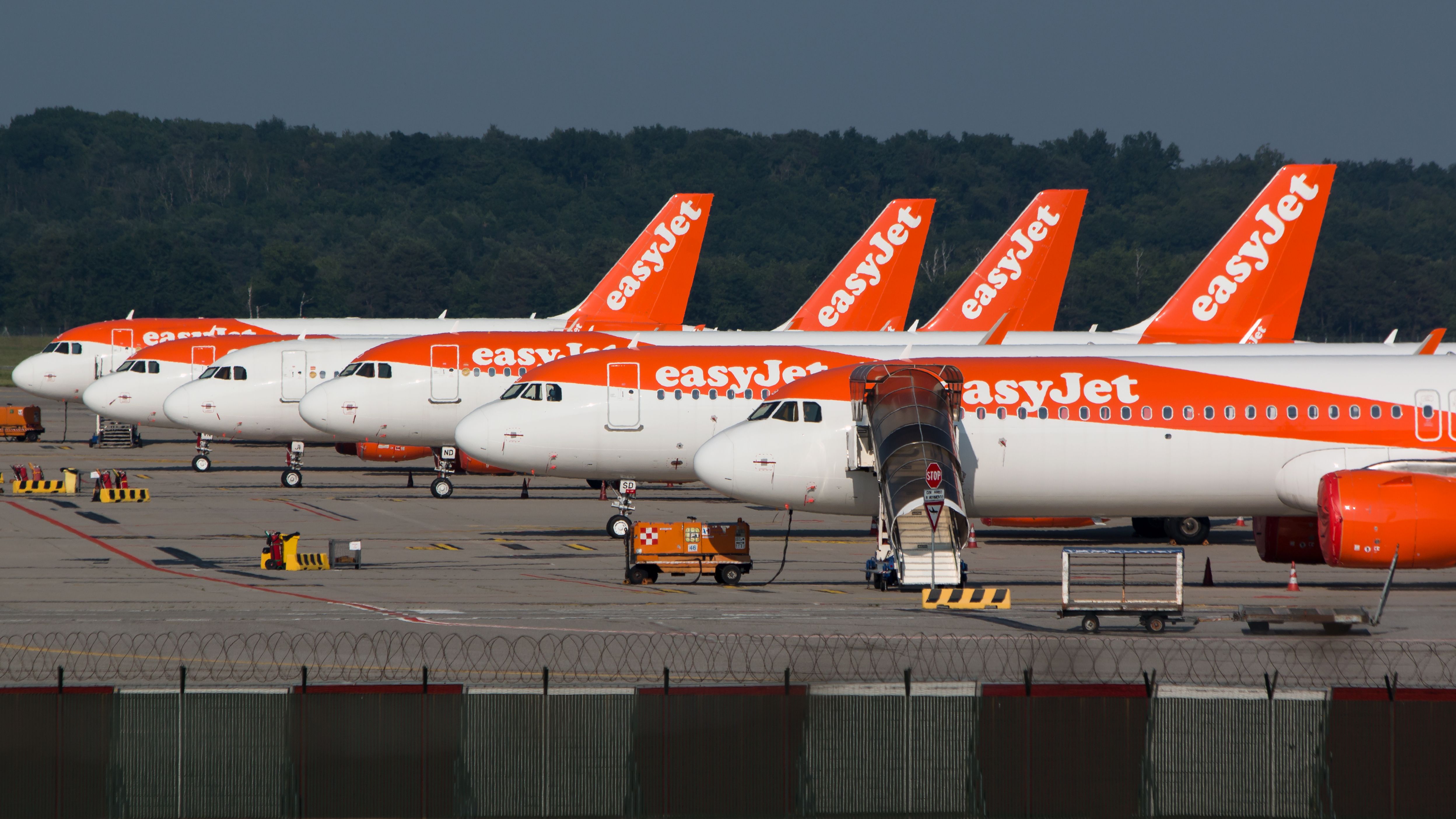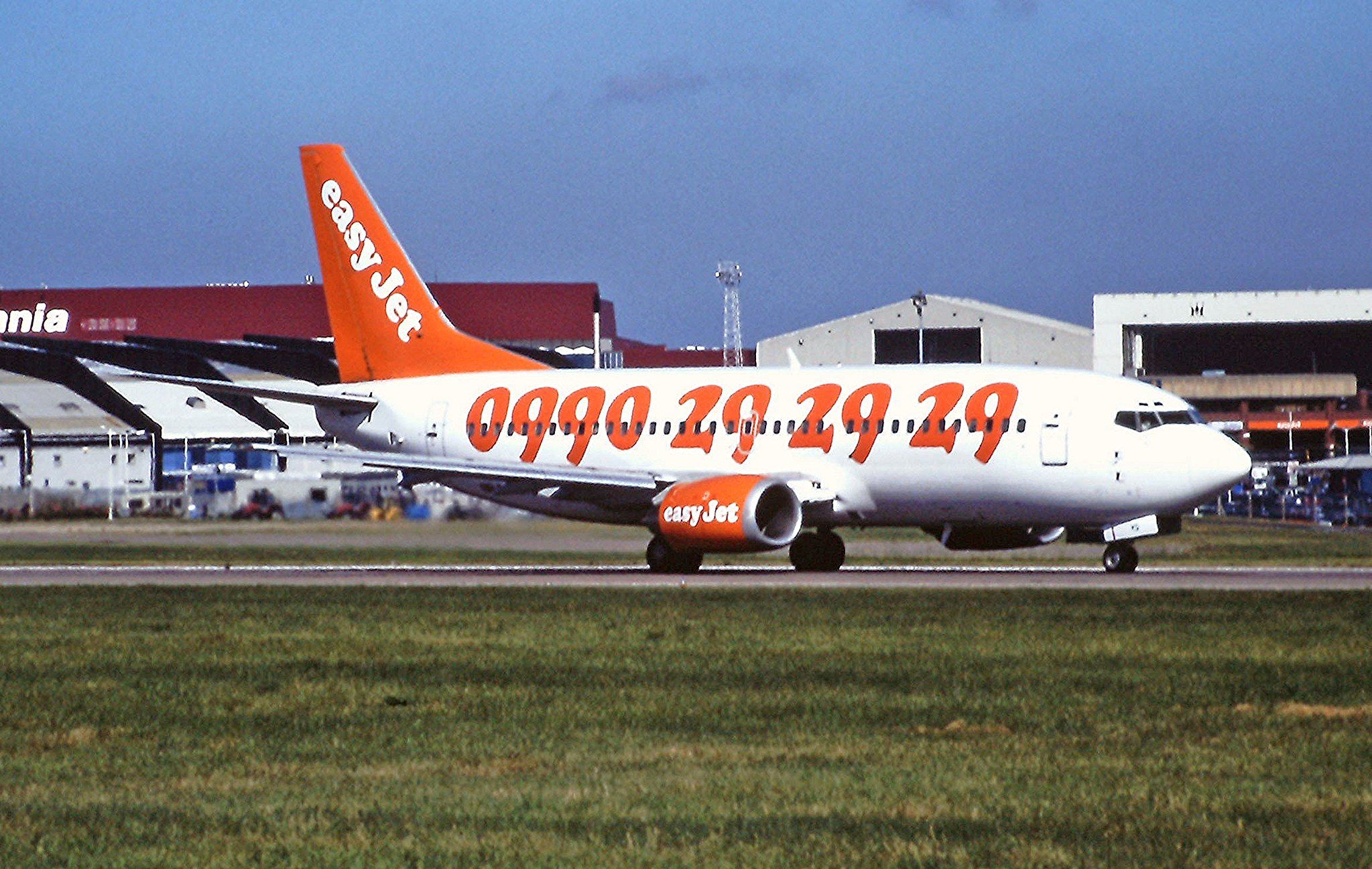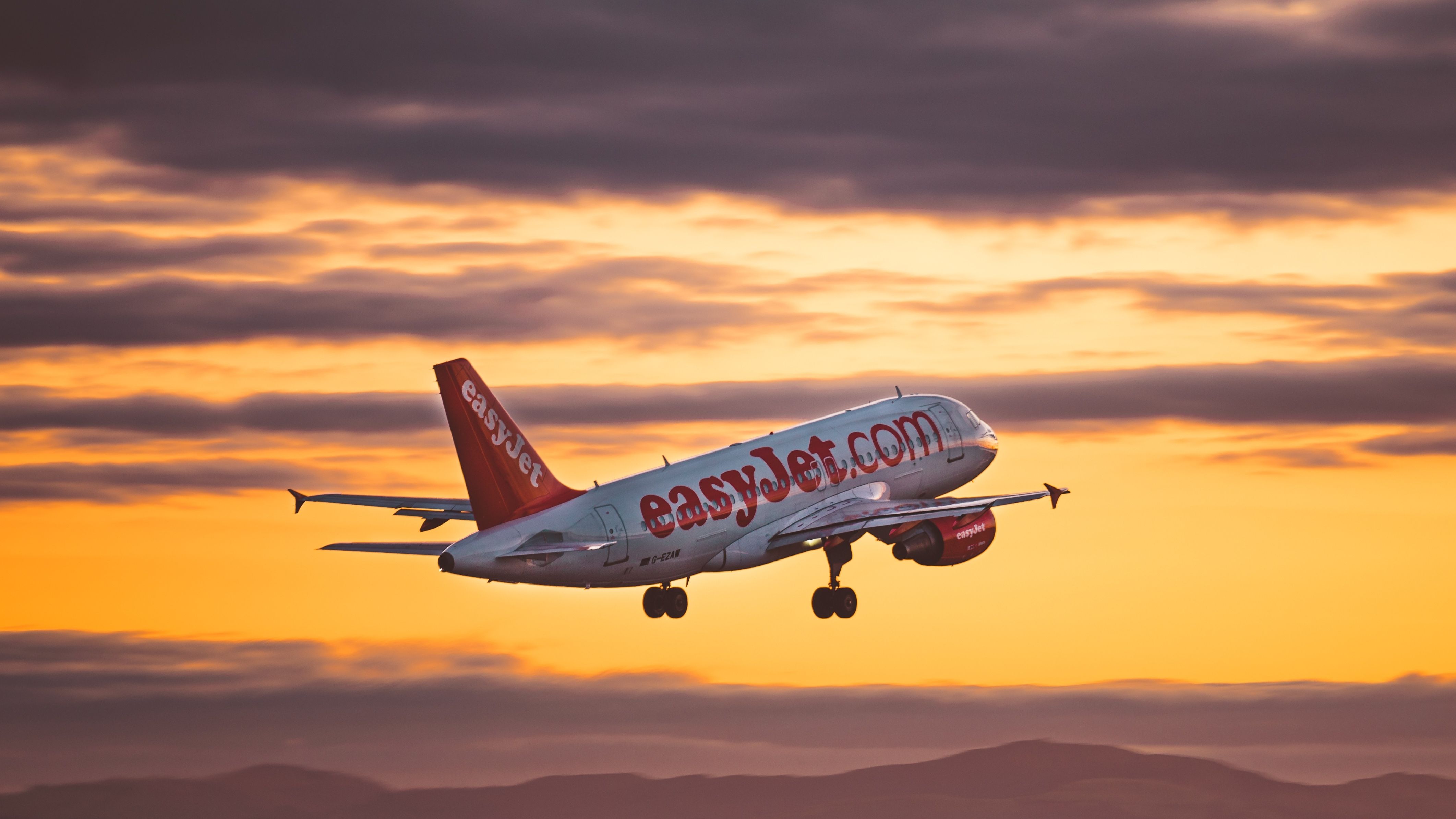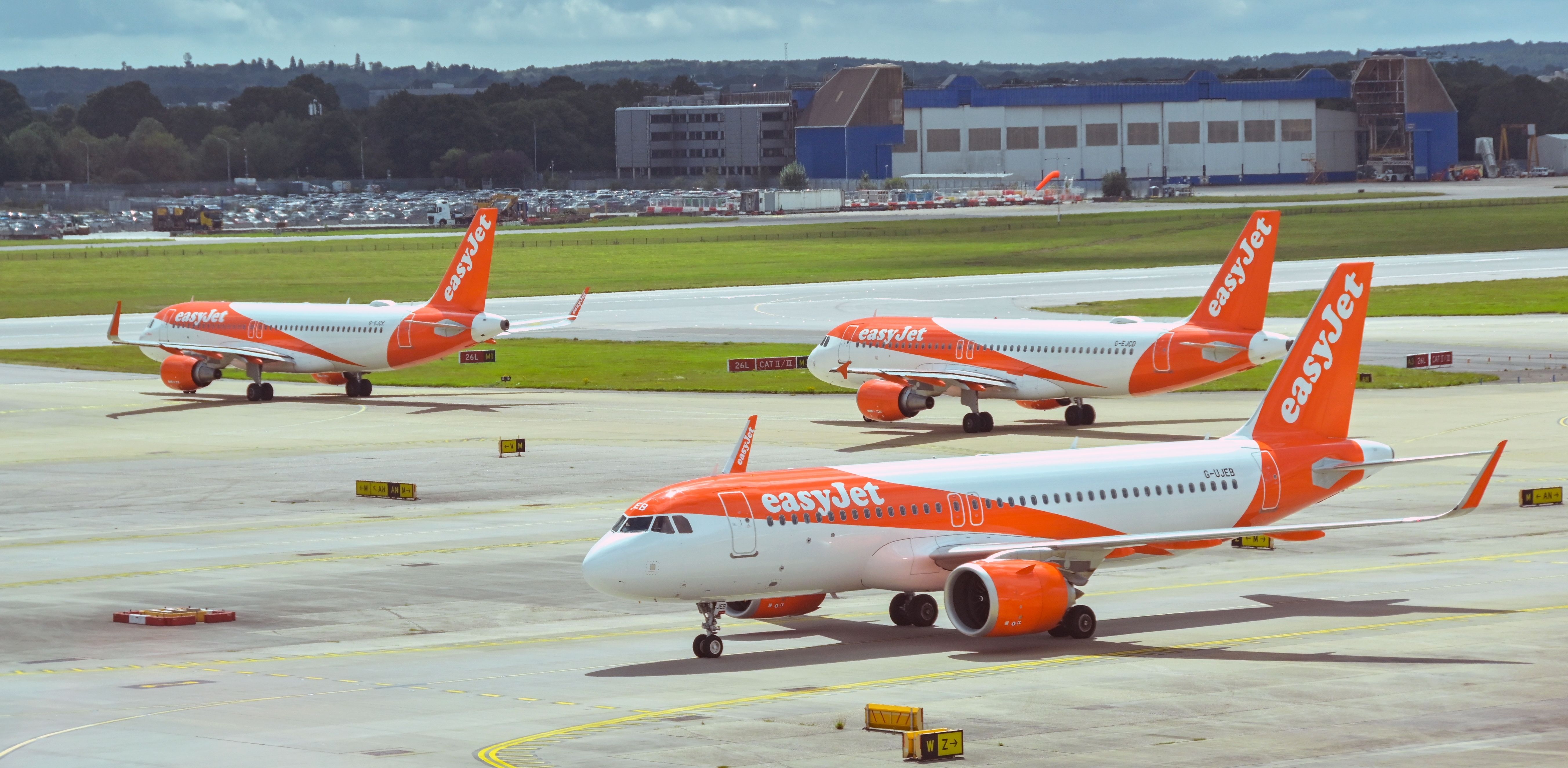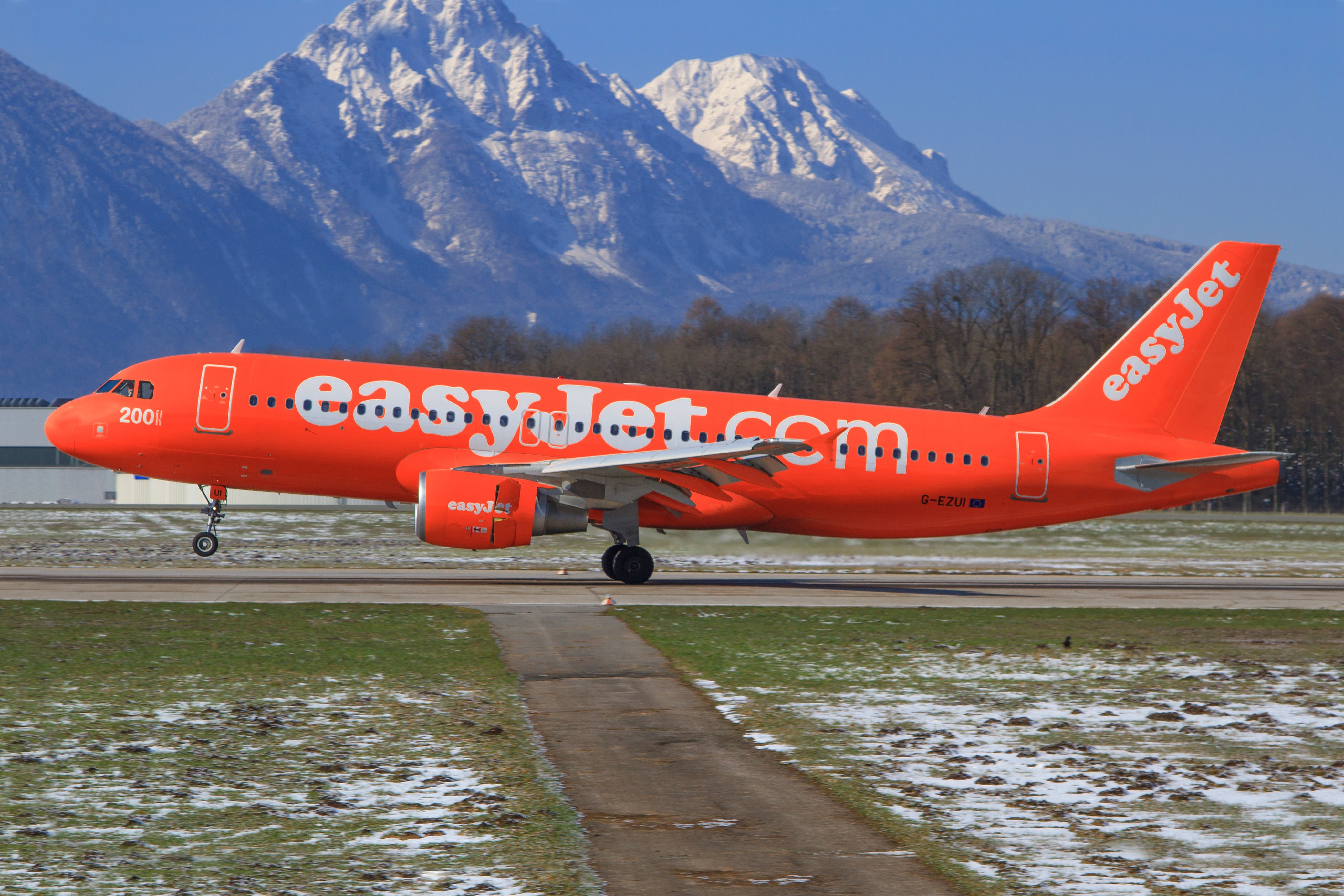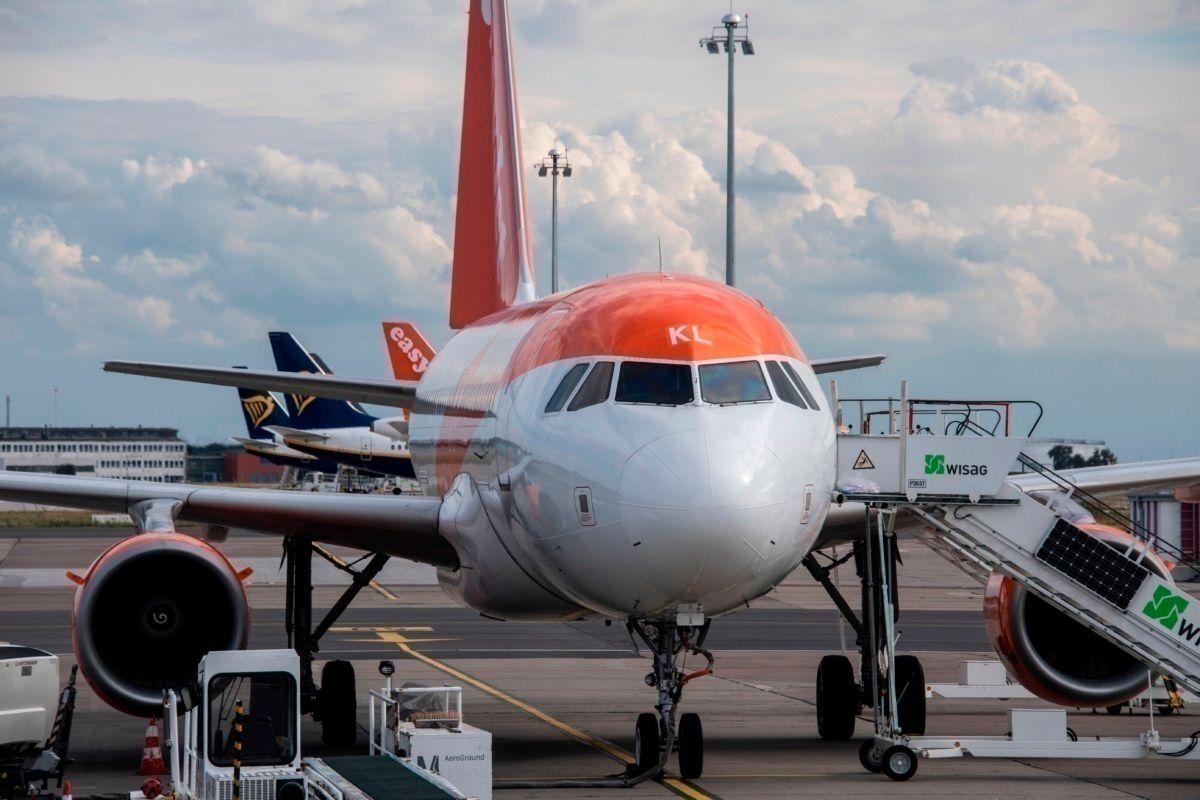Since taking to the skies above Europe in the mid-1990s, easyJet's white and orange aircraft have been some of the most distinctively-liveried jets in the region. While these primary colors have remained consistent throughout the carrier's history, it has made a handful of adaptations along the way and produced certain special liveries. Let's take a look back in time to see how the paint scheme has evolved.
Starting with the phone number
In its early years, easyJet looked to use its livery to catalyze bookings by adorning the fuselages of its early Boeing 737s with the up-and-coming low-cost carrier's telephone number. This was because, for the first few years of its history, easyJet didn't have a website on which passengers had the ability to book flights.
As such, phone sales were essential. Because of this, the airline used its planes to serve as a giant reminder of its contact number. This represents a stark contrast to today's industry, where online bookings are favored. Interestingly, this meant that the main bodies of the aircraft didn't conspicuously bear easyJet's name.
Love aviation history? Discover more of our stories here!
Instead, the carrier let the aircraft's engines and tail serve this purpose. These were painted orange, with the text written in white, and they instantly stood out against the more conventionally-colored fuselage. This allowed easyJet to build a strong brand identity, which it retains today - the future certainly was orange!
Moving online
As internet use became more widespread in the late 1990s, easyJet also began moving parts of its online operations. Indeed, according to the Luton-headquartered budget airline, it launched its very own website in April 1997. However, it wasn't until a year later that this featured online booking functionality. This period also heralded a livery adjustment in accordance with the change.
Get the latest aviation news straight to your inbox: Sign up for our newsletters today!
Specifically, as seen in the photograph above, this alteration saw easyJet swap its phone number for its website address while keeping its engine and tail designs the same. Underneath the bright orange URL, the carrier also displayed the motto "the web's favorite airline." This highlighted the increasing importance of the Internet in its operations, which is a factor that has remained consistent ever since.
The most recent major change
As a result of the continued prevalence of online operations at easyJet and other airlines worldwide, unlike when it switched the focus from its phone number, there was little need to change the livery for quite some time. However, the carrier eventually made a change in 2015, the year which marked easyJet's 20th birthday, which resulted in a sharper and cleaner aesthetic to its aircraft.
As seen in the photograph above, easyJet's aircraft now only display its name rather than its full website address. Furthermore, the engines no longer have 'easyJet' written on them and are instead a plain orange design. The diagonal orange stripe on which the airline's name is written in white provides an interesting splash of color and distinguishes the aircraft as unmistakably belonging to easyJet.
Special liveries
Throughout its history, which now dates back almost three decades, easyJet has also applied special liveries to its aircraft from time to time. For example, the orange-clad low-cost carrier has used such color schemes to celebrate aspects such as its corporate partnerships (Europcar and Unicef), destinations (Venice and many others), and UK national treasures (William Shakespeare).
Another occasion for which easyJet came up with a special paint job was the delivery of its 200th Airbus jet, which took place in May 2011. In this instance, the airline invested in its traditional color scheme, resulting in a striking all-orange paint job! The aircraft in question, G-EZUI, flew in these colors for six years before joining easyJet Switzerland. At this point, it received the new orange and white livery.
easyJet's fleet today
Let's conclude by taking a look at the sorts of aircraft that easyJet flies in its famous orange and white livery today. Despite commencing operations as a Boeing 737 family operator, data from ch-aviation.com now shows that the carrier solely operates Airbus jets. Specifically, easyJet UK has 58 A319-100s, 75 A320-200s, 35 A320neos (plus 127 on order), and 10 A321neos (plus 33 on order).
Regarding the carrier's European subsidiaries, the easyJet Switzerland fleet presently features 20 A320-200s and seven A320neos. Meanwhile, easyJet Europe has 38 A319-100s, 76 A320-200s, 10 A320neos, and five A321neos.
Which is your favorite easyJet livery? Have you ever flown on one of its specially-painted aircraft? Let us know your thoughts and experiences in the comment section.
Sources: ch-aviation.com, easyJet

